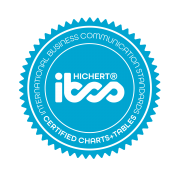In this article, we’ll make a case for the importance of having standards in our lives, explain the basics of IBCS, show a lot of examples of IBCS compliant reports, and finally show you what it takes to implement IBCS in your organization.
What is IBCS?
The International Business Communication Standards (IBCS) are practical proposals for the design of business communication. Without standards in place, the CEO might get blue line charts for sales from one financial analyst, and a red pie chart from another. Someone else decides that columns or bars are a better fit for the data. In this case, the design of the reports and, even worse, the design of the individual objects (charts, tables and cards) on the reports is decided by each author individually. This leads to confusion for the management team that receives these reports, poor decision-making, and often even complete disregard for the reports they were given.

The suggestion of the IBCS association is to use the same expressions and the same visualizations for the same content. If the content is not the same, it should not look the same.
The IBCS standards are based on Hichert’s SUCCESS rules and are comprised of three pillars:
- Conceptual rules – how to organize your content so that it gets your message across.
- Perceptual rules – which visualizations to use in any given case.
- Semantic rules – introduce the IBCS notation. This is the actual standardization of business communication. It covers the unification of all important and frequently used aspects of business communication: terminology, descriptions, dimensions, analyses, and indicators.
And so, the standards are built on top of scientific, experimental, and practical experience foundation. All business communication problems can be fixed if the following 3 preconditions are satisfied:
- Concept. You have to have a clear concept with a set of rules on how you plan to make the internal business communication more effective, understandable, and standardized. The IBCS Standards offer a straightforward way of doing this.
- Software. Without software, you cannot fix any business communication problems. This was rather difficult 5 years ago. There was Excel, but no other tool existed. Today, the situation is very different.
- The right management. The management must be on board with the change. Currently, this point is proving to be the toughest of the three. People are hesitant to change their concepts. They’re proud of what they’ve done and don’t want to suddenly start following some external rules. If, however, the top management (CEO, CFO) is on board, the changes can be passed on to the lower levels. There are certain organizations that have rolled out these concepts on a worldwide scale. But it’s not a weekend job, it took them 3-4 years to do it.
The role of software in the implementation of IBCS
Luckily, the software knows what are the previous year, sales, head-count, etc. There is a meta-layer in the software where certain rules are defined that incorporate IBCS into the software. In order for a software tool to be officially accepted as being able to create IBCS compliant reports, the IBCS Association offers a certification process.
The software must pass strict testing procedures to ensure the charts created and reports produced are in line with the IBCS specifications.
Below you can see the practical examples of applying IBCS standard into business reports.
IBCS certification process
IBCS certification process is carried out by BARC, the independent research and consulting institute for business software. The examination is carried out in two stages: compliance with IBCS and ease of use. In the first stage, software providers need to show the required level of compliance between visuals delivered by their software and the required standard as prescribed by IBCS. In the second stage, the software is evaluated in terms of how easy it makes creating new templates from scratch, without programming, and by using default features.

Zebra BI Tables and Charts visuals are the first IBCS-certified visuals for Power BI. They’re fully compliant with Dr. Rolf Hichert’s IBCS (International Business Communication Standards), which ensures that business information is presented clearly, concisely, and consistently across the cloud, mobile, and desktop versions of Power BI. The certification team was most impressed by what we would like to call ‘business-responsive design’. Zebra BI Visuals for Power BI dynamically create IBCS® compliant charts providing maximum business insight within a given space.
The IBCS standard design notation is rendered automatically, without adjusting any of the settings.
The typical business scenarios like actual (AC), plan, or budget (PL, BU), forecasts (FC), or previous year (PY) are automatically coded with standard patterns. The variances are presented in intuitive plus-minus, lollipop, or waterfall charts. Even the tiniest details, such as the difference highlights, outlier indicators, semantic axis, etc. are automatically rendered in pixel-perfect accuracy.
In addition to out-of-the-box support for IBCS standards, Zebra BI visuals for Power BI feature
1-click data sorting, powerful outlier handling, advanced small multiples, responsive visuals, improved navigation and full customization. Best practice reporting is now available on Power BI platforms: Desktop, mobile, and cloud.
Find out more about IBCS and why standardization of business communication is important.